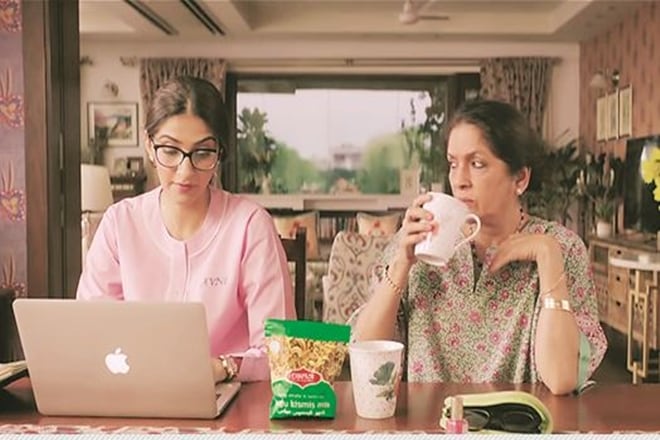By Sonam Saini
Last year was a good one for the film industry, with as many as 13 films entering the Rs 100-crore club. Add to this the fact that the Indian film industry produces over 1,000 films per year, and you have a perfect marketing platform. No wonder then, brands are eyeing embedded advertising and movie associations more seriously than ever before.
As per the FICCI-EY’s 2019 report, A Billion Screens of Opportunity, 1,776 films were released in CY 2018 as compared to 1,807 films in 2017. Despite a decline in the number of films released, 2018 was a more successful year for the Hindi box office.
Consider 2018’s line-up of films like Veere Di Wedding, Zero, Race 2 and Sanju, which proved to be vehicles for brands to ride the movie wave. More recently, the Ranveer Singh-starrer Gully Boy had over 20 brand associations across categories.

“To expect a 20% brand involvement in some of the bigger cinematic offerings is not unrealistic today. Brands love the chemistry that cinema creates,” says Harish Bijoor, founder, Harish Bijoor Consults. An association with a movie is all about piggybacking on the allure of the star, the story and the genre represented by the movie.
“What started as in-film product placement exercises have morphed to become activities that are deeply involved in advertising and ground-level activation,”adds Bijoor.
Mostly, such tie-ups are beneficial for garnering higher media visibility by film production studios.
The partnership can range anywhere from Rs 70 lakh to Rs 4 crore for co-branded, out-of-movie associations (brand campaigns, contests and tie-ups with the movie and its star cast), while in the case of a brand’s placement within a movie, the cost is approximately Rs 15 lakh to Rs 1 crore. Ashish Pherwani, partner, and media and entertainment leader, EY India, explains that brands get an exposure link to the film and for production houses, it is a revenue stream that reduces production costs. “So it is a win-win situation for both. In terms of the partnership, there can be various models but most of these associations are paid ones.” “Production houses don’t have a high TV reach on their own. When brand associations happen, it gives a far higher reach on traditional media, which can be television, radio, OOH or co-branded promos,” opines Rudrarup Datta, senior VP, marketing, Viacom18 Motion Pictures. “All this helps us in visibility and reach particularly for the opening of the film.”
Jewellery brand Tanishq’s association with Padmaavat is an example where the brand was not only integrated into the film but also launched its own special line around the film called Tanishq-Padmaavat.
In-film associations have a cash value attached to them due to the active placement by brands, whereas out-of-film placements (like co-branded advertising), doesn’t have a cash component to it, usually. Consider Shaadi.com, a matchmaking service, which had in-film placements with movies like Zero which was paid for, and out-of-film associations with Jab Harry Met Sejal and Badrinath ki Dulhania.
Pamit Anand, AVP and head, growth and marketing, People Interactive (owner of Shaadi.com), shares, “We try to stay away from paid engagement because under that, production houses can arm twist brands for a forced-fit within the film. We create a lot of awareness about the films we tie-up with through our platform. In turn, we let production houses leverage our equity and presence.”
Talking about the JBL association with Gully Boy which was a paid partnership, Sumit Chauhan, VP-lifestyle audio, Harman India, says, “We tend to associate ourselves with those movies, directors and artistes who work with aspirational storylines, which explains our association with Gully Boy. It also helps brands with sales and creates awareness about the product.

